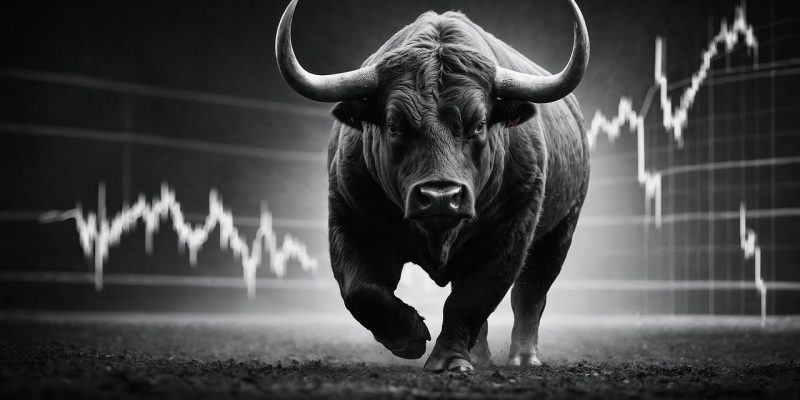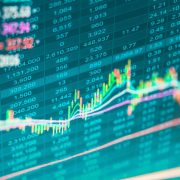
Few could have predicted the remarkable market performance in 2024.
Starting the year with low equity valuations, recessionary warnings, and cautious investor sentiment, the stage seemed set for challenges.
Yet, a steady stream of interest rate cuts by the Federal Reserve, along with growing confidence in AI’s transformative potential, proved to be the game-changers.
Despite sporadic market jitters—ranging from geopolitical conflicts to Big Tech’s late-year weakness—investors capitalized on every dip.
This resilience pushed the S&P 500 and Nasdaq Composite to their best performances in years.
S&P could go as high as 7,500-8,000 under optimal conditions
Market strategists have differing views on 2025.
On average, the S&P 500 is expected to rise by about 7%, with targets clustering between 6,500 and 6,700, according to Bloomberg data.
However, according to a report by Barron’s, several experts are projecting a more dramatic climb.
John Stoltzfus of Oppenheimer Asset Management forecasts the S&P 500 could reach 7,100, driven by AI’s transformative impact.
Others, like Société Générale’s Manish Kabra, suggest the index might hit 7,500 or even 8,000 under optimal conditions.
“AI is akin to the invention of the car in the 1920s, revolutionizing productivity,” Stoltzfus explains. “Its potential to solve pressing challenges across sectors could significantly boost economic output.”
Deregulation and tax cuts under Trump could boost earnings across sectors
A key driver of bullish forecasts is Trump’s incoming administration, which promises aggressive deregulation and tax cuts.
From slashing corporate tax rates to dismantling restrictive regulations, these policies could boost earnings across sectors.
Industries like financials, energy, and manufacturing are expected to benefit the most.
Deregulation in these areas could reverse decades of sluggish productivity, especially in manufacturing.
For energy, relaxed emissions rules could translate into higher profitability.
The financial sector may see the loosening of restrictions on credit-card fees and “buy now, pay later” services, among others.
Kabra estimates these measures could lift earnings per share by 2%-3%.
Lessons from the dot-com bubble
While the outlook appears promising, some analysts warn of potential risks reminiscent of past bubbles.
The dot-com boom of the late 1990s saw consecutive 20% gains, only to culminate in a painful crash in 2000.
Benjamin Bowler of BofA Securities likens the current euphoria to the intro of a bubble.
“Booms result in bigger busts,” he cautions. High valuations, coupled with rising volatility, could make the market more unpredictable.
Historical data also suggest that back-to-back 20% annual gains are rare.
Only three such streaks exist, with two ending in sharp downturns. Could 2025 mark another turning point?
How Fed’s moves shape the market?
The Federal Reserve remains a wildcard.
With further rate cuts expected in 2025, the Fed aims to balance economic growth against inflation risks.
However, any resurgence in inflation could force a policy reversal, potentially derailing the market’s momentum.
Edward Yardeni of Yardeni Research predicts that dovish monetary policy could push the S&P 500 toward 7,000 but acknowledges the increased likelihood of a correction if inflation heats up.
“Rate cuts are a double-edged sword,” Yardeni notes. “While they boost growth, they also risk overheating the economy and inflating asset bubbles.”
AI revolution: The driving force behind optimism
AI’s growing integration into industries has been a cornerstone of market confidence.
Unlike the speculative frenzy of the dot-com era, today’s AI investments promise tangible productivity gains.
Adam Parker of Trivariate Research emphasizes that the S&P 500’s evolving composition—dominated by tech and high-margin firms—justifies higher valuations.
He points to AI as a catalyst for unlocking efficiencies in data processing, supply chain management, and innovation.
“AI could make today’s valuations look cheap,” Parker asserts.
“The question is whether earnings growth will keep pace with expectations.”
Navigating 2025: Strategies for Investors
As the market prepares for a potentially volatile year, experts recommend strategic positioning:
- Focus on economically sensitive sectors: Consumer cyclicals, financials, and materials offer growth opportunities as global activity picks up.
- Leverage Big Tech’s defensive appeal: The “Magnificent Seven” companies—led by Nvidia, Tesla, and Amazon—combine innovation-driven growth with relative safety.
- Consider options for hedging: With rising volatility, options strategies may offer a cost-effective way to mitigate downside risks.
Risks on the horizon: Tariffs, inflation, and recession fears
While optimism dominates, significant risks could disrupt the rally.
Tariffs and trade tensions under Trump’s administration could erode corporate profits.
Additionally, rising unemployment and muted capital spending raise the spectre of a recession.
Peter Berezin of BCA Research highlights these concerns, arguing that tax cuts alone won’t spur business investment.
“We’re on a path to recession regardless,” he contends, citing Trump’s contentious policies as potential headwinds.
The path forward: Embracing discomfort
For investors, navigating 2025 will require a mix of optimism and caution.
High valuations and policy uncertainties make for an unpredictable environment, but the convergence of deregulation and AI-driven growth offers unique opportunities.
“Investing in a bubble demands resilience,” Bowler advises. “Volatility is likely to rise, but so is the potential for substantial gains.”
Whether the market soars or stumbles, one thing is clear: 2025 will be a pivotal year for shaping the future of investing.
The post US market outlook for 2025: can the bull run last? appeared first on Invezz









